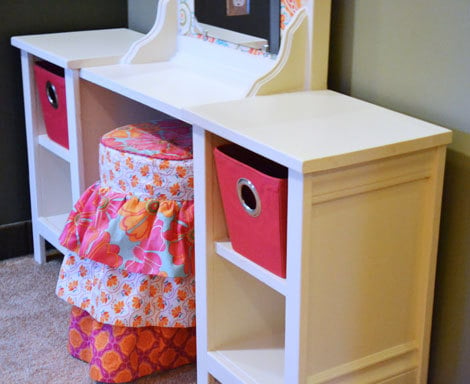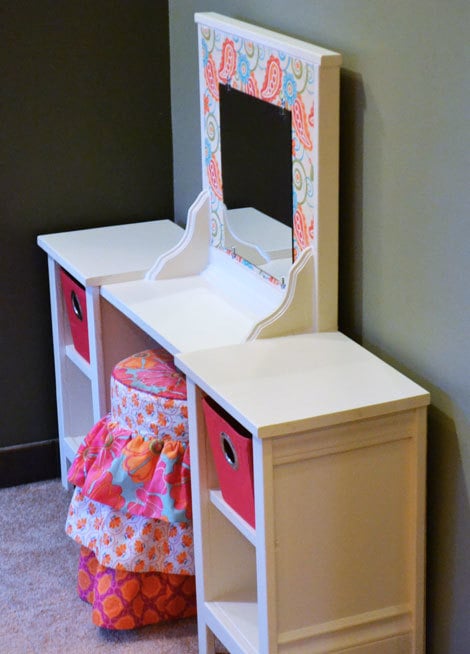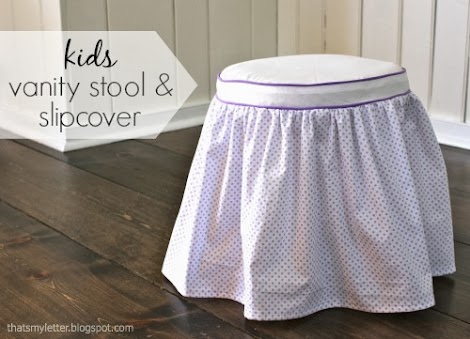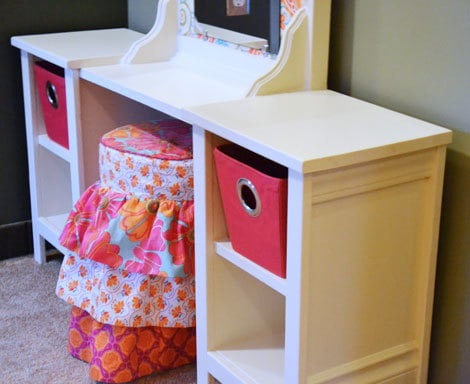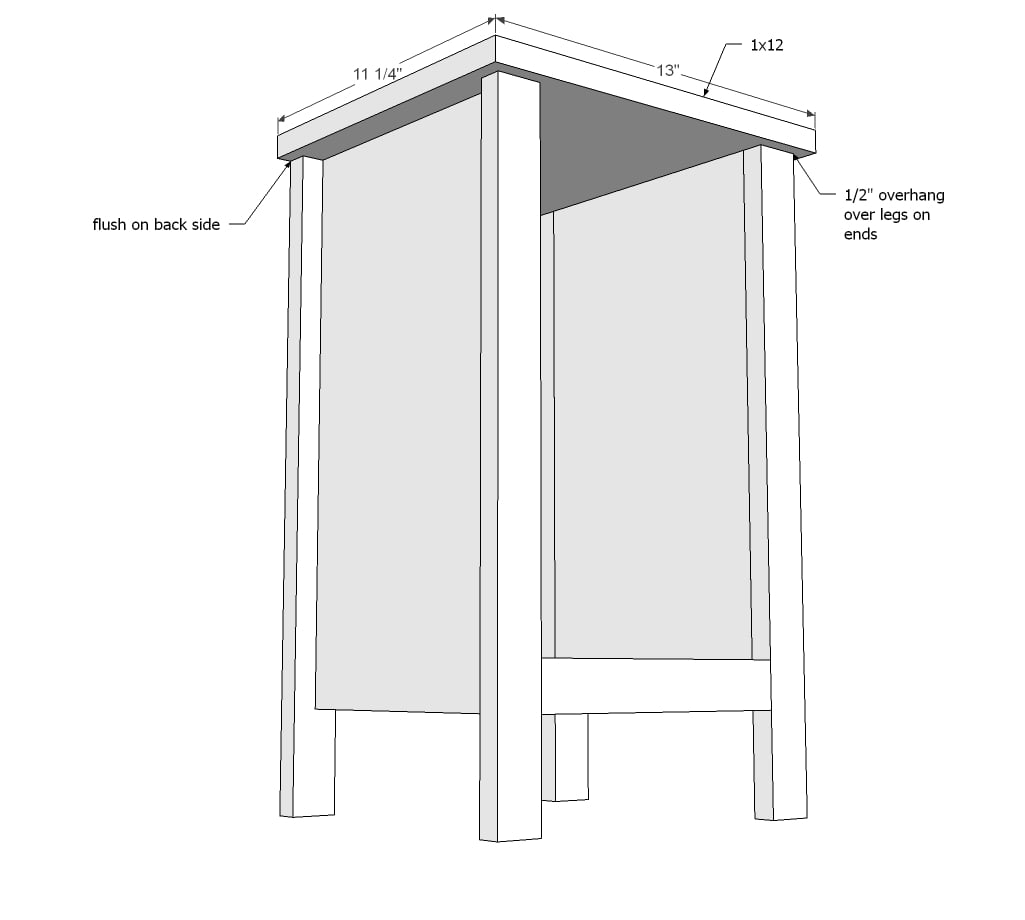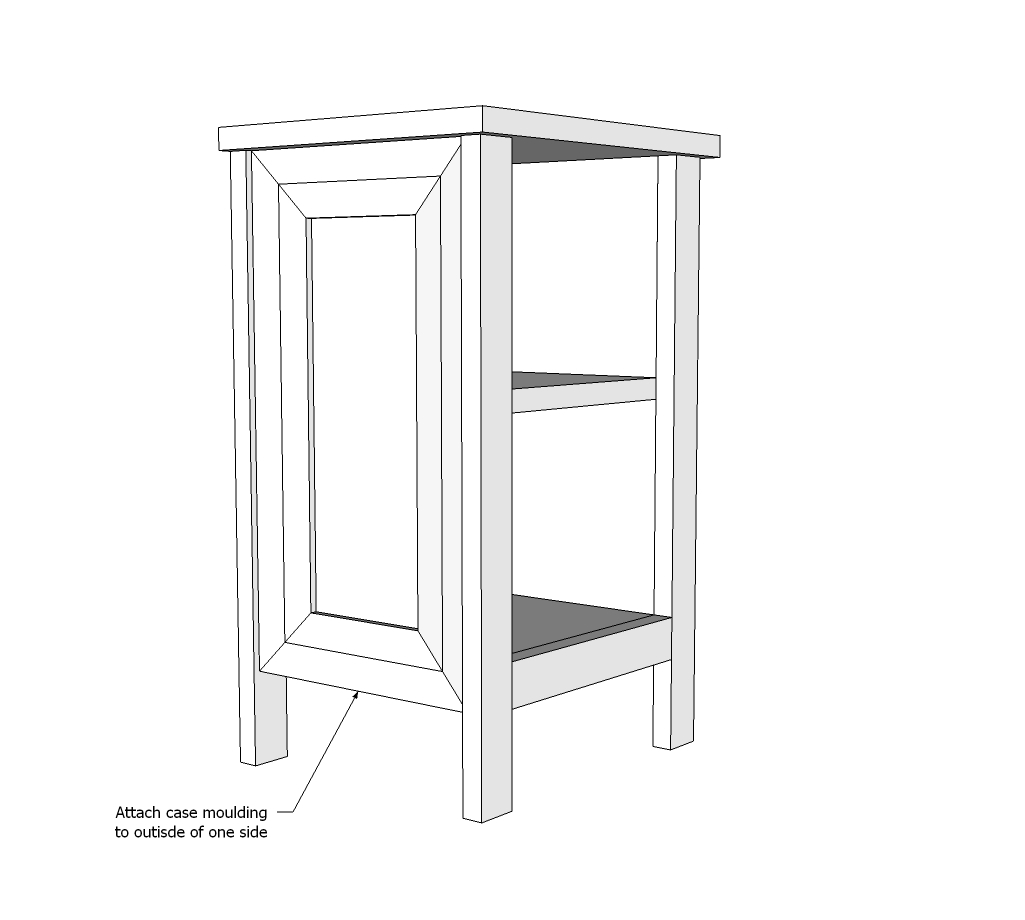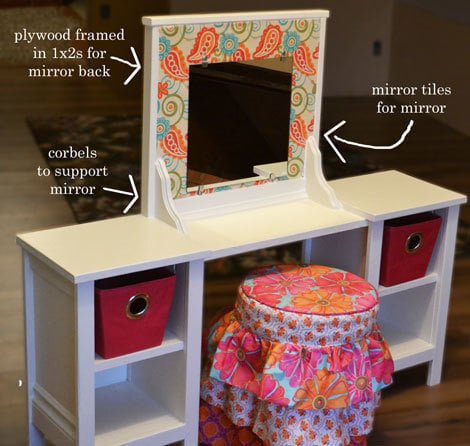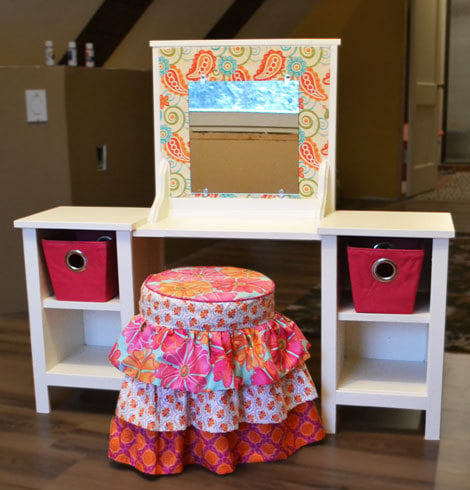
DIY play vanity from Ana-White.com
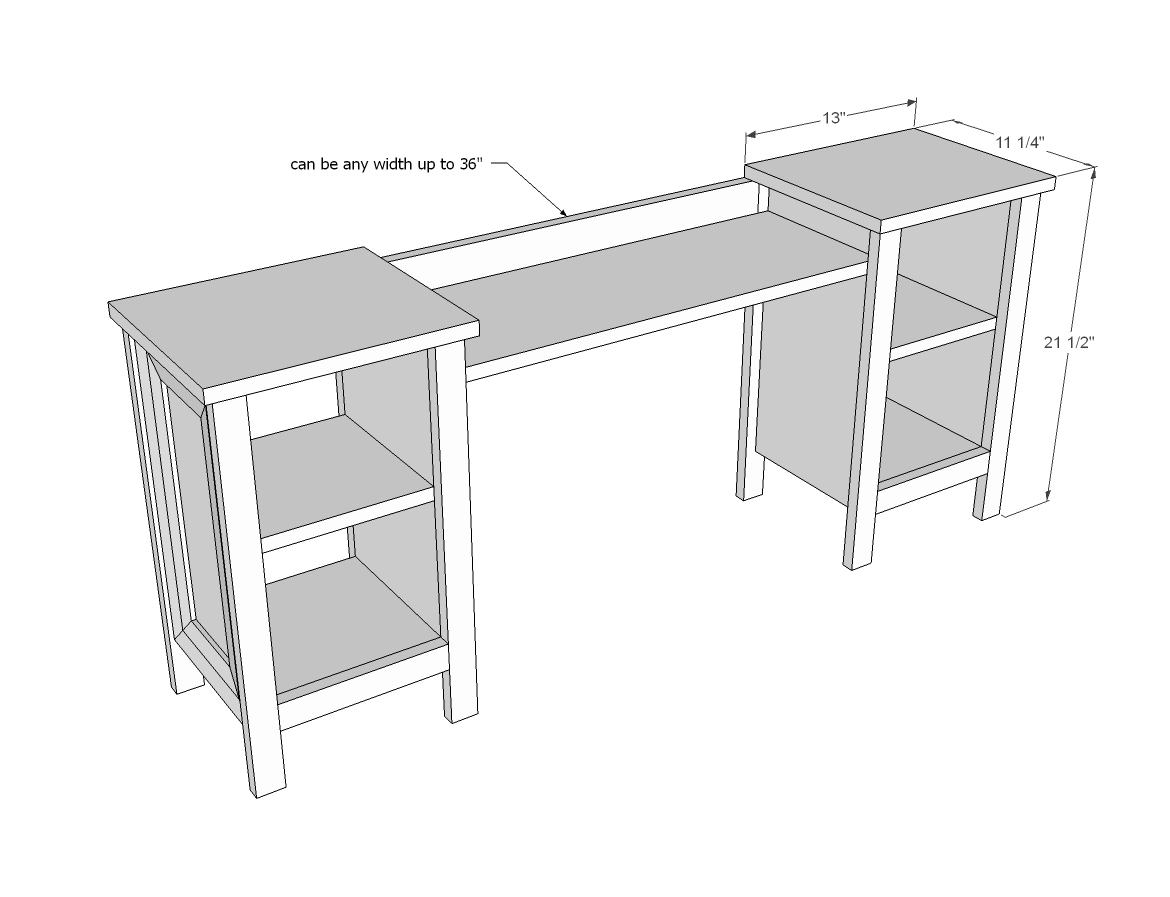
Preparation
9+ feet of 1x10s (add more for center tabletop)
2 - 1x2s @ 8 feet long
1 - 1x12 - 27" long
Base moulding and casing for trim on sides
1/4" plywood for backs (optional)
4 - 1x10 @ 17 1/2”
4 - 1x10 @ 9”
8 - 1x2 @ 20 3/4”
4 - 1x2 @ 9”
2 - 1x12 @ 13”
Mitered casing to decorate ends
1x10 for center tabletop (cut to fit)
1x3 or 1x4 for back center tabletop (cut to fit)
Please read through the entire plan and all comments before beginning this project. It is also advisable to review the Getting Started Section. Take all necessary precautions to build safely and smartly. Work on a clean level surface, free of imperfections or debris. Always use straight boards. Check for square after each step. Always predrill holes before attaching with screws. Use glue with finish nails for a stronger hold. Wipe excess glue off bare wood for stained projects, as dried glue will not take stain. Be safe, have fun, and ask for help if you need it. Good luck!
Instructions
Step 1
Step 2
Step 6
The vanity top can be made to any size, although any longer than 36" and you may have sagging issues. We attached with pocket holes, first attaching the 1x10 between the two towers, and then adding the back trim (cut to fit).
NOTE: Jen choose to build her vanity top differently to accommodate her mirror - see below.
It is always recommended to apply a test coat on a hidden area or scrap piece to ensure color evenness and adhesion. Use primer or wood conditioner as needed.


